Special thanks to Tim Beiko, Justin Drake, and developers fromvarious L2 teams for feedback and review

The goal of Ethereum is the same as what it has been from day 1:building a global, censorship-resistant permissionlessblockchain. A free and open platform for decentralizedapplications, built upon the same principles (what we might call todaythe regenand cypherpunkethos) as GNU + Linux, Mozilla, Tor, Wikipedia, and many other greatfree and open source software projects that came before it.
Over the past ten years, Ethereum has also evolved another propertythat I have come to greatly appreciate: in addition to the innovation incryptography and economics, Ethereum is also an innovation insocial technology. Ethereum as an ecosystem is a working, livedemonstration of a new, more open and decentralized way of buildingthings together. Political philosopher Ahmed Gatnash describes hisexperience at Devcon asfollows:
... A glimpse of what an alternative world could look like - one mostlyfree of gatekeeping, and with no attachment to legacy systems. In itsinversion of society's standard status systems, the people who are heldin highest social status here are the nerds who spend all their timehyper focused on independently solving a problem that they really deeplycare about, not playing a game to climb the hierarchies of legacyinstitutions and amass power. Almost all the power here was soft power.I found it beautiful and very inspiring - it makes you feel likeanything would be possible in a world like this, and that a world likethis is actually within reach.
The technical project and the social project are inherentlyintertwined. If you have a decentralized technical system attime T, but a centralized social process maintaining it, there is noguarantee that your technical system will still be decentralized at timeT+1. Similarly, the social process is kept alive in many ways by thetechnology: the tech brings in users, the ecosystem made possible by thetech provides incentives for developers to come and stay, it keeps thecommunity grounded and focused on building rather than just socializing,and so on.
Where you can use Ethereum to pay for things around theworld, Oct 2024. Source.
As a result of ten years of hard work governed by this mix oftechnical and social properties, Ethereum has come to embody anotherimportant quality: Ethereum does useful things for people, atscale. Millions of people hold ETH or stablecoins as a form ofsavings, and many more use these assets for payment: I'm one of them. Ithas effective, working privacytools that I use to pay for VPNs to protect my internet data. It hasENS, a robust decentralized alternative to DNS and more generally publickey infrastructure. It has working and easy-to-use Twitter alternatives.It has defi tools that offer millions of people higher-yielding low-riskassets than what they can access in tradfi.
Five years ago, I was not comfortable talking about the latter usecase for one primary reason: the infrastructure and the code were notmature, we were only a few years removed from the massive and highlytraumatic smart contract hacks of 2016-17, and there is no point inhaving a 7% APY instead of a 5% APY if every year there is a 5% chanceyou willinstead geta -100%APY. On top of this, transaction fees were too high to make thesethings usable at scale. Today, these tools have shown their resilienceover time, the quality of auditing tools has increased, and we areincreasingly confident in their security. We know whatnot to do.L2 scaling is working.Transaction fees have been verylow for almost a year.
We need to continue building up the technical and socialproperties, and the utility, of Ethereum. If we have theformer, but not the latter, then we devolve into amore-and-more-ineffective "decel" community that can howl into the windabout how various mainstream actors are immoral and bad, but has noposition to actually offer a better alternative. If wed have the latter,but not the former, then we have exactly the Wall Street greed-is-goodmentality that many of us came hereprecisely to escape.
There are many implications of the duality that I have justdescribed. In this post, I want to focus on a specific one, whichmatters greatly Ethereum's users in the short and medium term:Ethereum's scaling strategy.
The rise of layer 2s
Today, the path that we are taking to scale Ethereum is layer2 protocols (L2s). The L2s of 2025 are a far cry from the earlyexperiments they were in 2019: they have reached key decentralizationmilestones, they are securing billions of dollars of value, and theyare currently scalingEthereum's transaction capacity by a factor of 17x, dropping fees by asimilar amount.
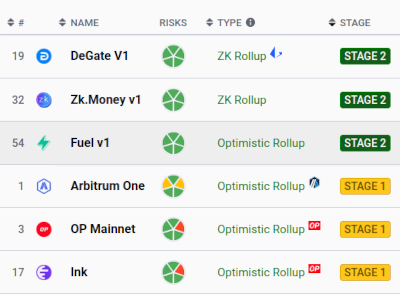
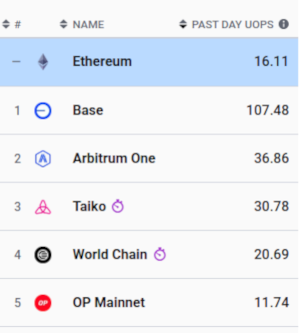
Left: stage 1 and stage 2 rollups. On Jan 22, Ink hasjoined as the sixth stage 1+ rollup (and third full-EVM stage 1+rollup). Right, top rollups by TPS, with Base leading at roughly 40% ofEthereum's capacity.
This is all happening just in time for a wave of successfulapplications: various defi platforms, social networks, predictionmarkets, exotic contraptions like Worldchain (now with 10million users) and more. The "enterprise blockchain" movement,widely viewed as a dead end after the failure of consortium blockchainsin 2010s, is coming back to life with L2s, with Soneium providing a leadingexample.
These successes are also a testament to the socialside of Ethereum's decentralized and modular approach to scaling:instead of the Ethereum Foundation having to seek out all of these usersitself, there are dozens of independent entities who are motivated to doso. These entities have also made crucial contributions to thetechnology, without which Ethereum would not be anywhere close to as faras it is today. And as a result, we are finally approaching escapevelocity.
Challenges:scale and dealing with heterogeneity
There are two primary challenges facing L2s today:
- Scale: our blob space is barelycovering the L2s and the usecases of today, and we have farfrom enoughfor the needsof tomorrow.
- Challenges of heterogeneity. The early visionfor how Ethereum could scale involved creating a blockchain that containsmany shards, each shard being a copy of the EVM that gets processedby a small fraction of the nodes. L2s are, in theory, animplementation of exactly this approach. In practice, however, thereis a key difference: each shard (or set of shards) is created by adifferent actor, is treated by infrastructure as being a differentchain, and often follows different standards. Today, this translatesinto composability and user experience problems for developers andusers.
The first problem is an easy-to-understand technical challenge, andhas an easy-to-describe (but hard-to-implement) technical solution: giveEthereum more blobs. In addition to this, the L1 can also do moderate amount of scalingin the short term, as well as improvements to proofof stake, statelessand light verification, storage,the EVM andcryptography.
The second problem, which has received the bulk of public attention,is a coordination problem. Ethereum is no stranger toperforming complex technical tasks between multiple teams: after all, wedid the merge. Here, the coordination problem is more challenging,because of the greater number and diversity of actors and goals andt thefact that the process is starting much later in the game. But evenstill, our ecosystem has solved difficult problems before, and we can doso again.
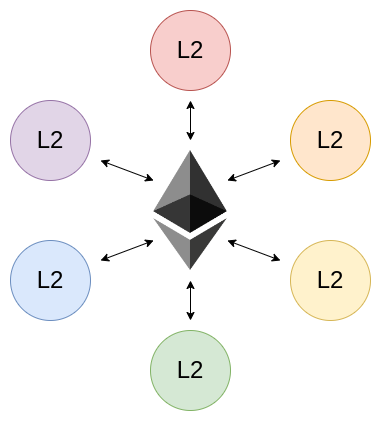
One possible shortcut for scaling is to give up on L2s, anddo everything through L1 with a much higher gas limit (either acrossmany shards, or on one shard). However, this approach compromises toomuch of the benefits of Ethereum's current social structure,which has been so effective at getting the benefits of different formsof research, development and ecosystem-building culture at the sametime. Hence, instead we should stay the course, continue toscale primarily through L2s, but make sure that L2s actually fulfill thepromise that they were meant to fulfill.
This means the following:
- L1 needs to accelerate scaling blobs.
- L1 also needs to do a moderate amount of scaling the EVM andincreasing the gas limit, to be able to handle the activitythat it will continue to have even in an L2-dominated world (eg. proofs,large-scale defi, deposits and withdrawals, exceptional mass exitscenarios, keystorewallets, asset issuance).
- L2s need to continue improving security. The samesecurity guarantees that one would expect from sharding (including eg.censorship resistance, light client verifiability, lack of enshrinedtrusted parties) should be available on L2s.
- L2s, and wallets need to accelerate improving andstandardizing interoperability. This includes chain-specificaddresses, message-passing and bridge standards, efficientcross-chain payments, on-chain configs and more. Using Ethereum shouldfeel like using a single ecosystem, not 34 different blockchains.
- L2 deposit and withdraw times need to become muchfaster.
- As long as basic interoperability needs are met, L2heterogeneity is good. Some L2s will be governance-minimizedbased rollups that run exact copies of the L1 EVM. Others willexperiment with different VMs. Others will act more like servers thatuse Ethereum to give users extra security guarantees. We need L2s ateach part of that spectrum.
- We should think explicitly about economics of ETH.We need to make sure that ETH continues to accrue value even in anL2-heavy world, ideally solving for a variety of models of how valueaccrual happens.
Let us now go through each of these topic areas in more detail.
Scaling: blobs, blobs, blobs
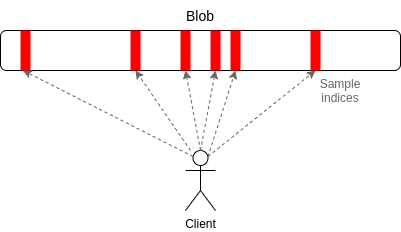
With EIP-4844, we now have 3 blobs per slot, or a data bandwidth of384 kB per slot. Quick napkin math suggests that this is 32 kB persecond, and each transaction takes about 150bytes onchain, so we get ~210 tx/sec. L2beat data gives us almost exactly thisnumber.
With Pectra, scheduled for releasein March, we plan to double this to 6 blobs per slot.
The current goalof Fusaka is to focus primarily on PeerDAS,ideally having nothing other than PeerDAS and EOF. PeerDAS could increase theblob count immediately by another 2-4x, and then 8x or more overtime.
After that point, the goal is to keep improving the technology toincrease the blob count further. When we get to 2Dsampling, we can reach 128 blobs per slot, and then keep goingfurther. With this, and improvementsto data compression, we can reach 100,000 TPS onchain.
So far, the above is all a re-statement of the pre-2025 status quoroadmap. The key question is: what can we actually change tomake this go faster? My answers are the following:
- We should be more willing to explicitly deprioritize features thatare not blobs.
- We should be clearer that blobs are the goal, and make relevant p2pR&D a talent acquisition priority.
- We can make the blob target adjusted directly by stakers, similar tothe gas limit. This would allow the blob target to increase more quicklyin response to technology improvements, without waiting for a hardfork.
- We can consider more radicalapproaches that get us more blobs faster with more trust assumptionsfor lower-resourced stakers, though we should be careful aboutthis.
Improvingsecurity: proof systems and native rollups
Today, there are three stage 1 rollups (Optimism, Arbitrum, Ink) andthree stage 2 rollups (DeGate, zk.money, Fuel). The majority of activitystill happens on stage 0 rollups (ie. multisigs). This needs to change.A big reason why this has not changed faster, is that building aproof system, and getting enough confidence in it to be willing to giveup training wheels and rely fully on it for security, ishard.
There are two paths toward getting there:
- Stage 2 + multi-provers + formal verification: usemultiple proving systems for redundancy, and use formal verification(see: the verified ZK-EVMinitiative) to get confidence that they are secure.
- Native rollups: make EVM state transition functionverification part of the protocol itself, eg. through a precompile (see:[1] [2][3]for research)
Today, we should work on both in parallel. For stage 2 +multi-provers + formal verification, the roadmap is relativelywell-understood. The main practical place where we can accelerate is tocooperate more on software stacks, reducing the need for duplicate workwhile increasing interoperability as a by-product.
Native rollups are still an early-stage idea. There is a lotof active thinking to be done, particularly on the topic of howto make a native rollup precompile maximally flexible. An ideal goalwould be for it to support not just exact clones of the EVM, but alsoEVMs with various arbitrary changes, in such a way that an L2 with amodified EVM could still use the native rollup precompile, and "bringits own prover" only for the modifications. This could be done forprecompiles, opcodes, the state tree, and potentially other pieces.
Interoperability andstandards
The goal is to make it so that moving assets between and usingapplications on different L2s has the same experience as you would haveif they were different "shards" of the same blockchain. There has for afew months been a pretty well-understood roadmap for how to do this:
- Chain-specificaddresses: the address should include both the account on the chain,and some kind of identifier for the chain itself. ERC-3770 is an earlyattempt at this, there are now more sophisticated ideas, which also movethe registry for L2s to the Ethereum L1 itself.
- Standardized cross-chain bridges and cross-chain messagepassing: there should be standard ways to verify proofs andpass messages between L2s, and these standards should not requiretrusting anything except for the proof systems of the L2s themselves.An ecosystem relying on multisig bridges is NOTacceptable. If it's a trust assumption that would not exist ifwe had done 2016-stylesharding, it's not acceptable today, full stop.
- Speeding up deposit and withdraw times, so that"native" messages can take minutes (and eventually one slot) rather thanweeks. This involves faster ZK-EVM provers, and proof aggregation.
- Synchronous read of L1 from L2. See: L1SLOAD,REMOTESTATICCALL.This makes cross-L2 interoperability significantly easier, and alsohelps keystorewallets.
- Shared sequencing, and other longer-term work.Based rollups are valuable in part because they may beable to do this more effectively.
As long as standards like these are satisfied, there is still a lotof room for L2s to have very different properties from each other:experimenting with different virtual machines, different sequencingmodels, scale vs security tradeoffs, and other differences. However, itmust be clear to users and application developers what level of securitythey are getting.
To make faster progress, a large share of the work can be done byentities that operate across the ecosystem: the Ethereum Foundation,client development teams, major application teams, etc. This will reducecoordination effort and make adopting standards more of a no-brainer,because the work that will be done by each individual L2 and wallet willbe reduced. However, L2s and wallets, as extensions of Ethereum, bothstill need to step up work on the last mile of actually implementingthese features and bringing them to users.
Economics of ETH
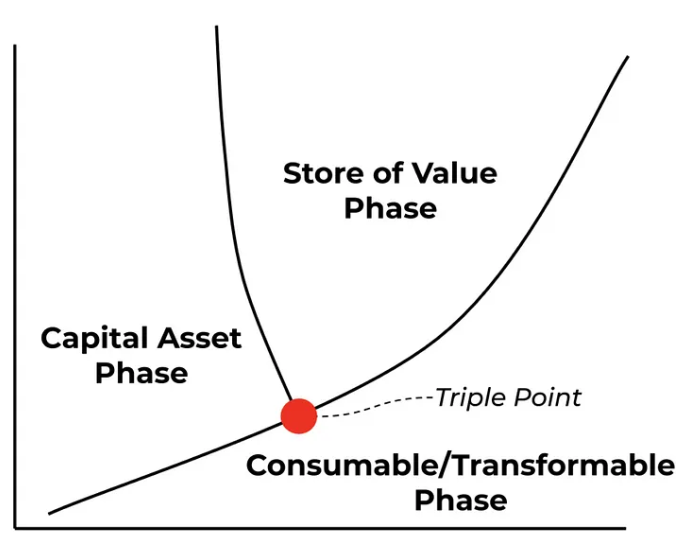
We should pursue a multi-pronged strategy, to cover all majorpossible sources of the value of ETH as atriple-point asset. Some key planks of that strategy could be thefollowing:
- Agree broadly to cement ETH as the primary asset of thegreater (L1 + L2) Ethereum economy, support applications usingETH as the primary collateral, etc
- Encourage L2s supporting ETH with some percentage offees. This could be done through burning a portion of fees,permanently staking them and donating proceeds to Ethereum ecosystempublic goods, or a number of other formulas.
- Support based rollups in part as a path for L1 to capturevalue through MEV, but do not attempt to force all rollups tobe based (because it does not work for all applications), and do notassume that this alone will solve the problem.
- Raise the blob count, consider a minimum blobprice, and keep blobs in mind as another possible revenue generator. Asan example possible future, if you take the average blob fee of the last30 days, and suppose it stays the same (due to induceddemand) while blob count increases to 128, then Ethereum would burn713,000 ETH per year. However, such a favorable demand curve is notguaranteed, so also do not assume that this alone will solve theproblem.
Conclusion: The Road Ahead
Ethereum has matured as a technology stack and a social ecosystem,bringing us closer to a more free and open future where hundreds ofmillions of people can benefit from crypto assets and decentralizedapplications. However, there is a lot of work to be done, and now is thetime to double down.
If you're an L2 developer, contribute to the tooling to make blobsscale more safely, the code to scale the execution of your EVM, and thefeatures and standards to make the L2 interoperable. If you are a walletdeveloper, be similarly engaged in contributing to and implementingstandards to make the ecosystem more seamless for users, and at the sametime as secure and decentralized as it was when Ethereum was just an L1.If you are an ETH holder or community member, actively participate inthese discussions; there are many areas that still require activethought and brainstorming. The future of Ethereum depends on every oneof us playing an active role.
免责声明:本文章仅代表作者个人观点,不代表本平台的立场和观点。本文章仅供信息分享,不构成对任何人的任何投资建议。用户与作者之间的任何争议,与本平台无关。如网页中刊载的文章或图片涉及侵权,请提供相关的权利证明和身份证明发送邮件到support@aicoin.com,本平台相关工作人员将会进行核查。




